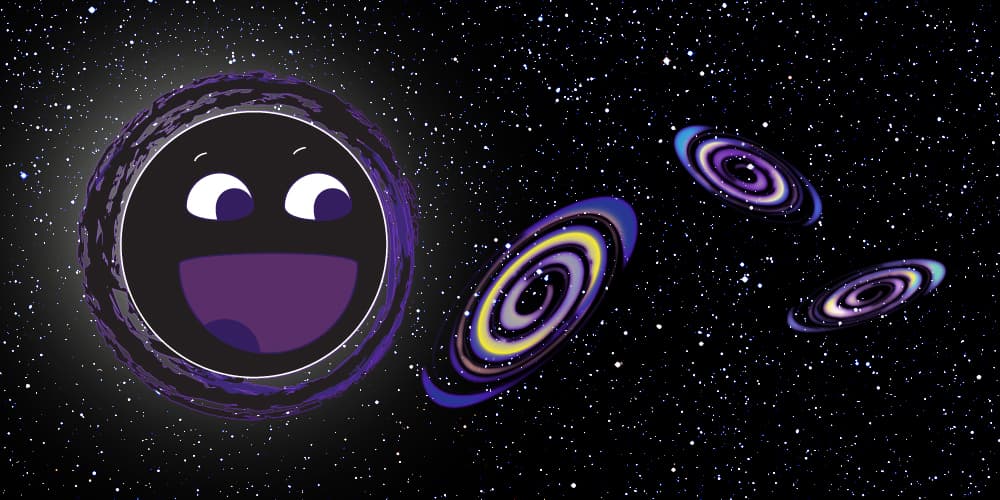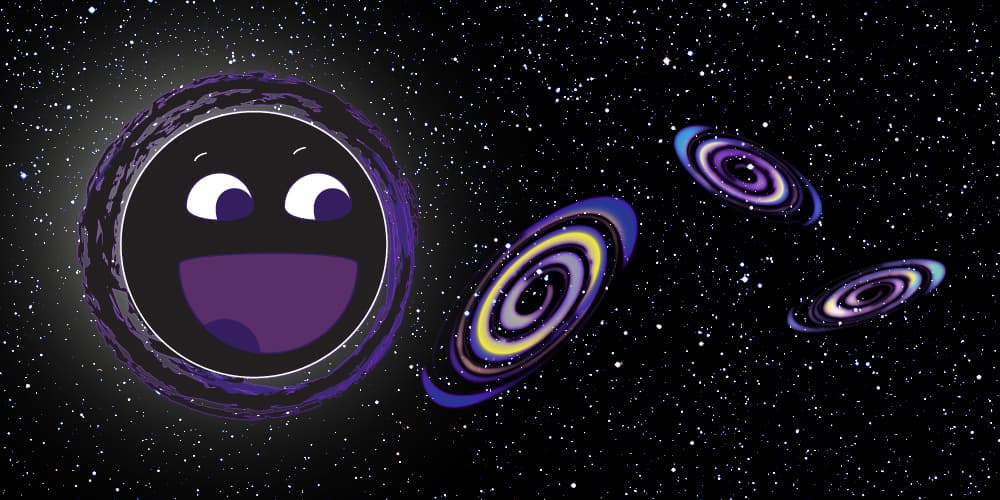We all get the munchies, but when you’re a supermassive black hole (SMBH) your hunger might have dire consequences. And just like that an SMBH has outgrown its galaxy and jumped to the top of the heavyweight objects in the universe.

“Artistic Impression” by Digital Welshman
About 12 billion light years from us, there is a galaxy called CID-947. It has a mass similar to our own Milky Way (about 1000 billion times the mass of the Sun) and it was only remarkable because it had an active galactic nucleus (AGN, i.e. an accreting SMBH). When material starts to fall into an SMBH, the accretion disk of infalling material and the relativistic jet of excited particles that are pushed away from the black hole generates and excess of light, in most if not all wavelengths. A usual signature of the presence of AGNs is a large amount of x-rays. That’s how CID-947 was found.
But when the team lead by Benny Trakhtenbrot estimated the mass of the SMBH, they found something unexpected. Usually, an SMBH holds about 0.5% of the mass of its host galaxy. Sagittarius A*, our friendly neighbourhood SMBH is 4 million solar masses, making the Milky Way an SMBH light galaxy. The opposite is true for CID-947. The mass of its SMBH (estimated using the virial motion of ionized gas around it) is 6.9×109 solar masses; a whopping 10% of the entire mass of CID-947, which is 4.4×1010 solar masses.
This finding is unprecedented. Not only is the SMBH evolving more efficiently than its host galaxy, but although it is emitting huge amounts of radiation it is not disrupting the galaxy’s high star-formation rate. Objects like this show us that the early universe is a more complex and more active time period than we had imagined.
REFERENCE
Trakhtenbrot et al. An Over-Massive Black Hole in a Typical Star-Forming Galaxy, 2 Billion Years After the Big Bang http://arxiv.org/abs/1507.02290

